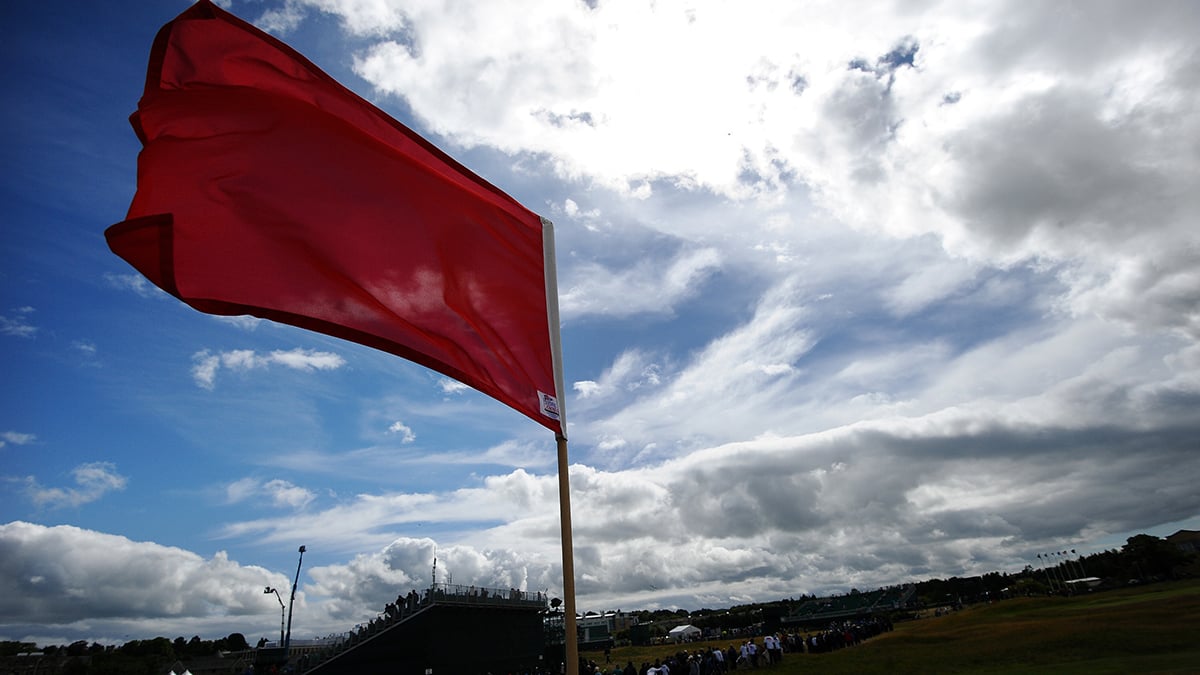Opinion: Nature’s Adversity – Australian Golf Digest

- by Admin
- September 25, 2024

As technology in life and golf marches ahead, several of our game’s most important elements continue to endure
Reflecting on this year’s Open at Troon, it’s difficult to put aside the visual contrast with other major championships. Players in The Open often face weather, particularly wind, that rarely trouble them to the same degree in continental America. Before Troon, this columnist took the time to watch several video recordings of past Open battles, and the key visual impression is the sight of trouser legs flapping in strong winds.
From the 1970s, when men wore their hair longer (think Jack Nicklaus and Tom Watson slugging it out at Turnberry in 1977) you see players rarely wearing hats or caps, their long hair blowing wildly in the wind as they hit their shots. Jack Newton’s battle with Watson at Carnoustie in 1975 is likewise a lesson in how to play championship golf in tough conditions.
Adverse weather is integral to links golf, along with pot bunkers, huge undulations and true wild rough (not fine grass simply let grow long). The thrill of watching these old battles lies as much in their being played against both nature and a dangerous opponent as for the terrific golf played with persimmon drivers and simple blade irons. The 2-iron – even the 1-iron – makes a regular appearance, and the putting on much slower greens is more dramatic than what we see today because the surfaces were less predictable in three dimensions: left, right and the pace of the ball.
At Troon this year we saw a combination of wind and bunkering amounting to perhaps the most severe test of golf imaginable. It served to humiliate many of the hitherto admired great names of the contemporary game – McIlroy, DeChambeau, et al – yet it rewarded the canniest players. Sadly for Australian golf fans the Grim Reaper that is Troon almost wiped out our traditionally strong showing at The Open.
These observations lead to the question: what will major tournament golf look like 20 years hence? To answer this question, let’s go back a hundred years. The furious march of technology was not something the golf world feared in the 1920s and 1930s as hickory shafts were replaced by steel shafts, and the manufacture of the golf ball improved to the point where dimples replaced cross-hatched surfaces, greatly improving the ball’s flight. Perhaps back then in the age of Sarazen, Hagen, and Jones there were voices of disquiet, but such schools of conservative thought – if they existed – remain unrecorded. Every age has its doubters and its enthusiasts for change.
Is today’s march of technology more threatening to the game than it was back then?
How, for instance, will artificial intelligence affect golf? Television broadcasts of tournaments have become a near-circus of illuminated trajectories and cartoon-like ball placement maps of fairways. Yet we golf fans have taken this in our step. Nobody remarks that it spoils the pleasure of watching a tournament on a screen. Though if you watch the videos from the 1970s and 1980s, there does seem to be less tension these days because of instantaneous knowledge of every shot’s result.
Perhaps in the future as soon as a ball is struck the AI technology will be able to anticipate the result before the ball has landed. Bryson DeChambeau, bless his heart, will probably patent the software and the chip design behind that.
Though it’s already beginning to dominate asset speculation and warfare, AI is not the modern Rosetta Stone. It cannot explain everything, and it can hardly play a part in how a human being physically strikes a ball, whether that occurs on a golf course, a tennis court or a football pitch. A golfer hits a ball with his or her hands, as the body rotates back and forward, the blow being intermediated by an elongated shaft with a clubhead at the end. This intricate motion is again intermediated by a frightful complication colloquially called the human mind, in essence a chaotic collection of greedy thoughts, fantasies of success, and a spectrum of terrors minor and major. Every golfer knows how this ghastly yet fascinating process works.
That is what we golfers crave when we watch the great beasts of the game contend for glory – the zenith of coherence between mind, body and hands, more especially when executed in the teeth of nature’s adversity. I, too, can do that! we tell ourselves in our mania. The march of technology may deliver more instant satisfaction to the viewer, but it will never replace the drama of the crucial shot, the physical blow struck at a nerve-wracking moment in a major tournament.
True beauty lies outside the realm of technology. May the trousers or skirt and the hair of a champion ever contend with the wind.
Image: peter muhly/ getty images
The Latest News
-
November 15, 2024Red Dawn: Australian Football League’s Gold Coast Suns Launch ‘Fearless’ New Brand, Logo
-
November 15, 2024Kyrgios confirmed to return to ATP Tour at Brisbane International 2025
-
November 15, 2024Australian bounce India’s arch-enemy amid KL Rahul dilemma
-
November 15, 2024Nick Kyrgios set to make long-awaited return to tennis as comeback date revealed
-
November 15, 2024List wins elusive DP World Tour card, Barron loses his





